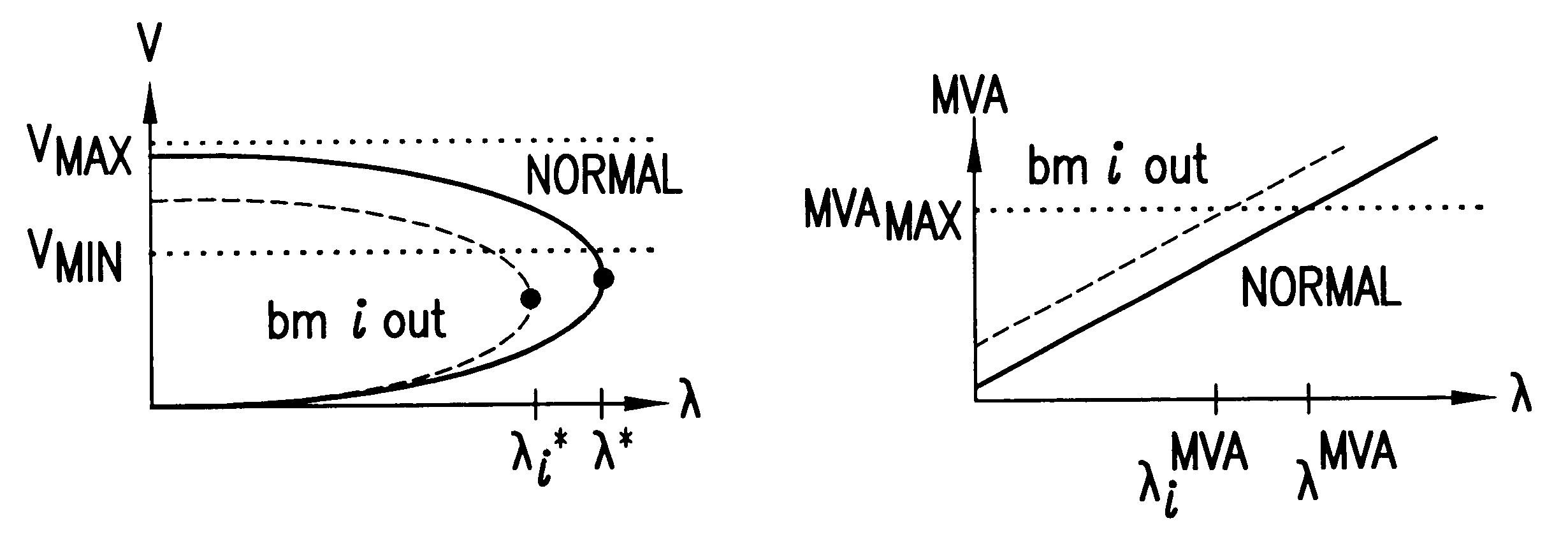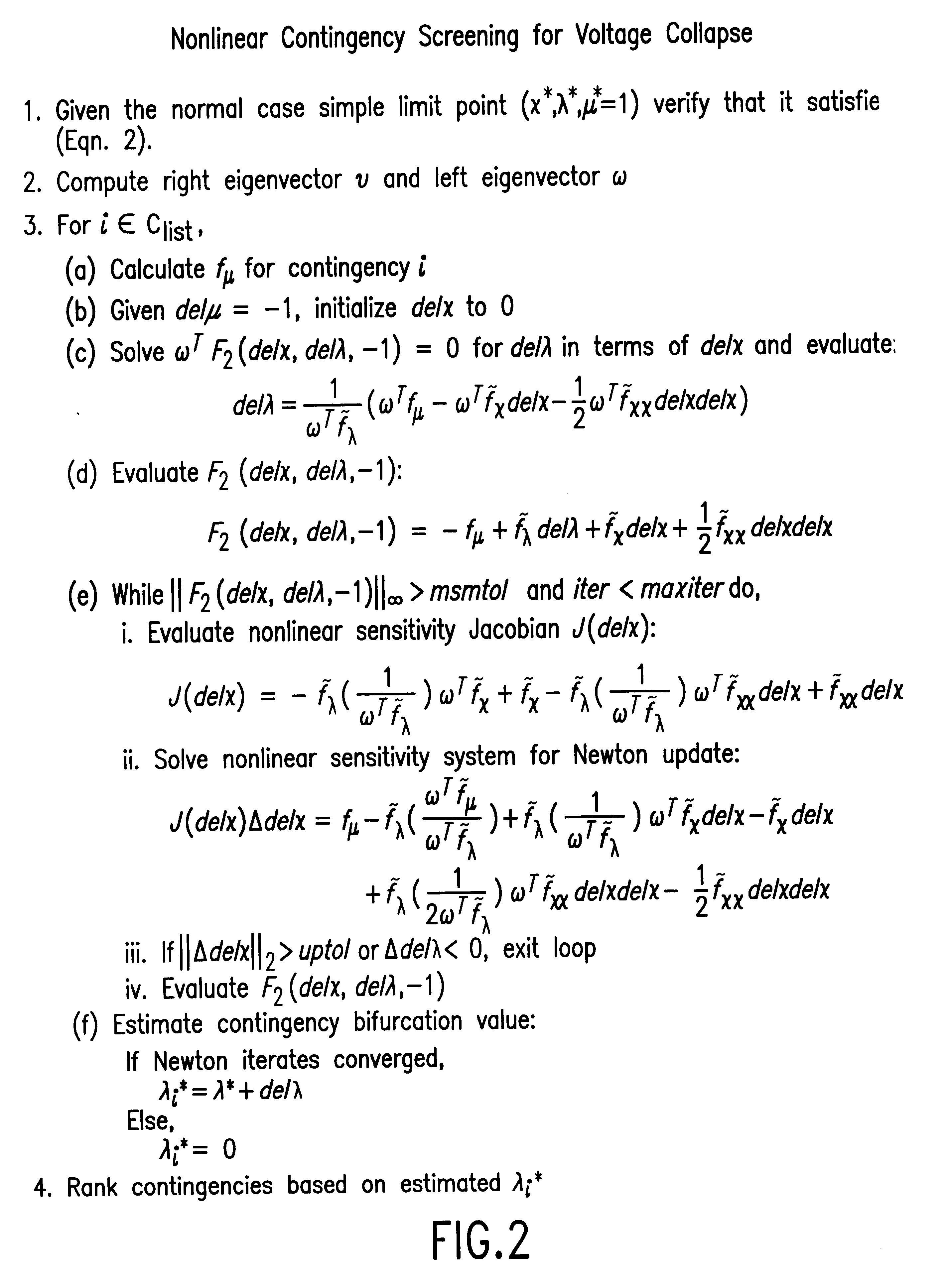Nonlinear contingency screening for voltage collapse
a contingency screening and voltage technology, applied in the direction of instruments, process and machine control, material dimension control, etc., can solve the problems of wide spread disturbance, complex determination of transmission network capability, and constant evolution of power system
- Summary
- Abstract
- Description
- Claims
- Application Information
AI Technical Summary
Benefits of technology
Problems solved by technology
Method used
Image
Examples
Embodiment Construction
The underlying nonlinear dynamical behavior associated with voltage collapse can be explained by the variation of an independent parameter leading to the loss of a stable equilibrium point via (i) saddle-node bifurcation, or (ii) subcritical Hopf bifurcation. The common element to both bifurcations is the disappearance of a stable equilibrium point combined with the absence of a local stable limit set. In other words, the power system state trajectory can no longer find a place to rest within the constraints of normal power system operation (e.g., branch MVA loading limits, voltage magnitude limits, system frequency limits). As soon as the trajectory violates an operating limit, the power system protection systems will begin tripping circuit breakers, eventually breaking the interconnected power system into smaller isolated systems called islands. While the disturbances could be caused by saddle-node bifurcation or subcritical Hopf bifurcation, the method of this invention is only c...
PUM
 Login to View More
Login to View More Abstract
Description
Claims
Application Information
 Login to View More
Login to View More - R&D
- Intellectual Property
- Life Sciences
- Materials
- Tech Scout
- Unparalleled Data Quality
- Higher Quality Content
- 60% Fewer Hallucinations
Browse by: Latest US Patents, China's latest patents, Technical Efficacy Thesaurus, Application Domain, Technology Topic, Popular Technical Reports.
© 2025 PatSnap. All rights reserved.Legal|Privacy policy|Modern Slavery Act Transparency Statement|Sitemap|About US| Contact US: help@patsnap.com



